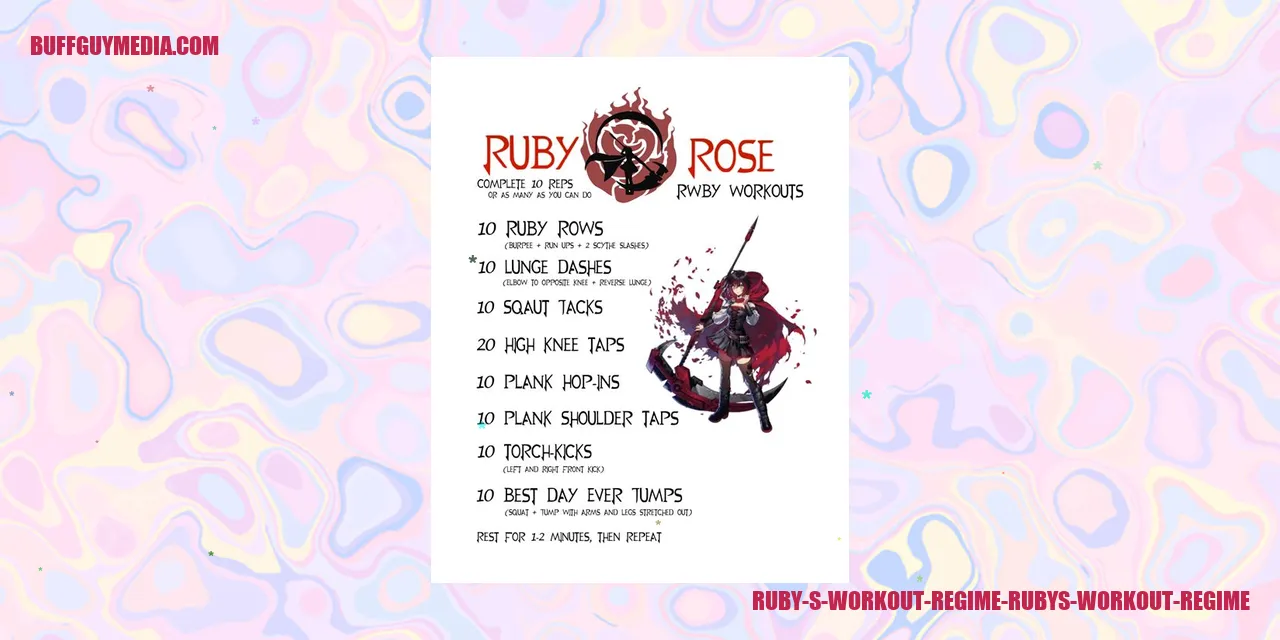P90X Back and Biceps Workout: Sculpt and Strengthen Your Upper Body
The Correct Technique for Optimal Back Exercises
When it comes to developing a strong and well-defined upper body, engaging in a focused back and biceps workout is indispensable. The P90X Back and Biceps Workout is a highly effective exercise routine tailored specifically to target these muscle groups, enabling you to attain the maximum outcome. To fully benefit from this workout, it is crucial to grasp the proper technique and form for back exercises.
The Significance of Using the Appropriate Form
Executing exercises using the correct form and technique is paramount in preventing injuries and ensuring optimal muscle engagement. In terms of back exercises, maintaining a neutral spine and activating the targeted muscles is of utmost importance. This ensures that the desired muscle groups are effectively targeted while minimizing strain on other areas.
Here are some key points to keep in mind when performing back exercises:
- Maintain core engagement and relaxed shoulders.
- Initiate the movement from your back muscles rather than relying solely on momentum.
- Sustain control throughout the entire range of motion, avoiding any jerky or unsteady motions.
Effective Exercises for Building Bicep Strength
An all-encompassing back and biceps workout should not overlook the bicep muscles, located on the front of the upper arm. By incorporating impactful bicep exercises into your regimen, you can achieve a well-balanced upper body strength and definition.
Here are some exceptional bicep exercises incorporated in the P90X Back and Biceps Workout:
- Standing Barbell Curls: This exercise primarily targets the biceps and forearms, contributing to overall arm strength.
- Incline Dumbbell Curls: Adjusting the angle of the bench allows you to address different parts of the bicep muscle for a targeted workout.
- Hammer Curls: This variation of the bicep curl targets both the biceps and the brachialis muscle, enhancing dimension and power.
[[READMORE]]
Also read:
Healthy Shavuot Recipes for a Delectable Feast
Remy Lacroix’s Weight Gain: A Personal Journey
Benefits of Including Pull-Ups in Your Back and Biceps Routine
Incorporating pull-ups into your back and biceps routine offers numerous advantageous outcomes. Pull-ups are compound exercises, engaging multiple muscle groups simultaneously. They primarily target the back muscles, particularly the lats, while also working the biceps, shoulders, and core.
Here are several notable benefits of integrating pull-ups into your workout routine:
- Enhanced back and bicep strength and definition
- Improved grip strength
- Enhanced upper body stability and posture
- Functional strength suitable for everyday activities
How to Prevent Common Injuries During Your Back and Biceps Workout
While the P90X Back and Biceps Workout yields exceptional results, it is imperative to prioritize safety and avoid common injuries that may occur during this type of routine.
Here are some tips to prevent injuries during your back and biceps workout:
- Warm up adequately before commencing the workout to increase blood flow to the muscles and reduce the risk of strains or pulls.
- Start with lighter weights and gradually increase the intensity as your strength and form improve.
- Listen to your body and allow ample rest between workouts to ensure proper recovery.
- If you experience any pain or discomfort, cease the exercise immediately and seek professional guidance.
By adhering to these guidelines and maintaining proper form, you can significantly reduce the risk of injuries and optimize the benefits of your P90X Back and Biceps Workout.

Fuel Your P90X Back and Biceps Workout with Proper Nutrition
Boost Muscle Recovery with Protein-Rich Foods
When engaging in the rigorous P90X Back and Biceps routine, it is crucial to prioritize your nutritional intake for effective muscle recovery. Protein, known for its muscle repair and building properties, should be an essential part of your diet. Include ample amounts of lean meats, poultry, fish, eggs, dairy products, and plant-based sources such as beans, lentils, and tofu to ensure an adequate protein intake.
Optimize Performance with Proper Hydration
Maintaining optimal performance during your P90X Back and Biceps workout requires proper hydration. Water plays a pivotal role in regulating body temperature, lubricating joints, and transporting nutrients to your muscles. Throughout the day, make sure to drink sufficient amounts of water, especially before, during, and after your workout. Stay away from sugary drinks and excessive caffeine, as they can dehydrate you.
Achieve Maximum Energy and Results with Nutritional Timing
The timing of your meals and snacks can significantly impact your energy levels and overall results while performing the P90X Back and Biceps routine. Aim to consume a well-balanced meal that includes carbohydrates, protein, and healthy fats approximately two hours before your workout to provide sustained energy. Within half an hour after your workout, refuel with a snack or meal that combines protein and carbohydrates to aid in muscle recovery.
Fuel Your Back and Biceps Training with Pre-Workout Snacks
Choosing the right pre-workout snacks can provide you with the necessary fuel for an effective Back and Biceps training session. Opt for easily digestible snacks that offer a combination of carbohydrates and protein. Consider options like a banana with a tablespoon of almond butter, Greek yogurt with berries, or a protein smoothie made with almond milk, spinach, and a scoop of whey protein powder. Experiment with various choices to discover the snack that works best for your body.
Please note that the provided HTML format needs to be placed within appropriate HTML, HEAD, and BODY tags to ensure correct display on a webpage. ]
![]()
The Significance of Establishing SMART Objectives
Monitoring Strength Gains and Enhancements in Back and Biceps Workouts
When it comes to the P90X Back and Biceps workout, carefully monitoring your progress and setting objectives are crucial for your overall success. By establishing specific, measurable, achievable, relevant, and time-bound (SMART) goals, you can maintain your focus and motivation throughout the program.
Having a well-defined target in mind enables you to push yourself further and effectively track your progress. SMART objectives provide a framework that assists in defining what you aim to achieve and creates a roadmap for attaining those goals.
Maintaining a Workout Journal to Track Progress
One effective method for monitoring your progress is by keeping a workout journal. Jot down the exercises you perform, the number of repetitions and sets, as well as the weights used. This documentation allows for an overview of your progress over time.
By documenting your workouts, you can identify areas where you have made improvements and areas that require more attention. This insight helps you make adjustments to your training program accordingly, ensuring continuous progress.
Recognizing Milestones and Sustaining Motivation Throughout the Program
Another critical aspect of progress tracking is acknowledging milestones. As you achieve your goals and witness improvements in your back and biceps exercises, take the time to acknowledge your accomplishments.
Rewards, even small ones, can serve as powerful incentives to keep you motivated. Whether it entails treating yourself to new workout attire or allowing for a cheat meal, celebrating milestones enhances your motivation and makes the journey more enjoyable.
Additionally, consider joining online communities or finding workout partners who are also participating in the P90X program. Surrounding yourself with like-minded individuals can provide accountability, support, and inspiration when you need it most.
To conclude, progress tracking and goal setting play vital roles in the P90X Back and Biceps workout regimen. By establishing SMART goals, maintaining a workout journal, and celebrating milestones, you can sustain your motivation, monitor your progress, and achieve success on your fitness journey.

Enhancing Your P90X Back and Biceps Workout: Exploring the Possibilities
Diverse Options for Different Fitness Levels
When it comes to the P90X Back and Biceps workout, classic pull-ups are typically the go-to exercise for building strength in these muscle groups. However, not everyone is ready to tackle pull-ups right away or challenge themselves further. Here are some alternative approaches to consider:
- Supported Pull-Ups: Utilize resistance bands or an assisted pull-up machine to reduce the resistance, gradually building strength for full pull-ups.
- Negative Pull-Ups: Initiate the exercise from the top position and carefully lower yourself, emphasizing the eccentric phase to enhance muscle development.
- Commando Pull-Ups: Instead of regular chin-ups, alternate bringing one hand at a time towards your shoulder while keeping your palms facing inward.
Home-Based Bicep Training with Resistance Bands
If you lack access to a gym or a pull-up bar, integrating resistance bands into your bicep training can be an effective alternative. Consider the following exercises:
- Banded Bicep Curls: Place the resistance band beneath your feet and perform bicep curls, mimicking the motion of dumbbell curls.
- Hammer Curls with Bands: Hold one end of the resistance band in each hand using a neutral grip, and curl your forearms toward your shoulders.
- Palms-Up Wrist Curls: Anchor one end of the resistance band beneath your feet, grasp the other end with an underhand grip, and curl your wrists upward against the resistance.
Expanding Your Back Development with Dumbbells and Barbell Exercises
Incorporating dumbbells and barbell exercises alongside pull-ups can provide a diverse range of variations that effectively target your back muscles. Try out the following exercises:
- Bent-Over Rows: Hold a dumbbell in each hand, hinge at the waist, and pull the weights toward your chest, squeezing your shoulder blades together.
- Wide-Grip Lat Pulldowns: Utilize a lat pulldown machine or resistance band to simulate the movement of pull-ups, but with a wider grip.
- Barbell Deadlifts: Employ correct form and a barbell to execute deadlifts, engaging your entire posterior chain, which includes your back muscles.
Adapting to Joint or Mobility Issues
If you experience joint or mobility issues that hinder certain exercises, it is crucial to find appropriate adaptations to continue training safely. Consider the following modifications:
- Band-Assisted Rows: Fasten a resistance band around a sturdy pole or anchor point, mimicking the rowing motion to target back muscles without excessive joint strain.
- Seated Dumbbell Curls: Assume a seated position on a bench or chair and perform bicep curls with dumbbells instead of standing, minimizing joint stress.
- Supported Rows: Lie face down on an inclined bench and perform rows with dumbbells, targeting back muscles while reducing joint stress.
By incorporating these variations and modifications into your P90X Back and Biceps workout, you can cater to individual fitness levels, engage in resistance band exercises at home, challenge yourself with dumbbells and barbells, and adapt exercises if joint or mobility issues are present. Remember to consult with a fitness professional or physical therapist if you have any specific concerns or limitations. Stay consistent and enjoy the journey towards stronger back and biceps muscles!]

An In-depth Look at the Significance of Rest Days in the P90X Back and Biceps Workout
Effective Strategies for Activating Muscle Recovery after Exercise
Rest and recovery play a vital role in maximizing the benefits of any workout program, including the challenging P90X Back and Biceps Workout. Despite the inclination to minimize downtime, incorporating rest days into your routine is crucial for optimizing your results and safeguarding against potential injuries.
Rest days are not synonymous with inactivity ; they serve as an opportunity for your body to repair and rebuild itself. Rigorous physical exertion causes microscopic damage to the muscles, and it is during rest that these fibers regenerate and grow stronger. Resting allows your muscles to replenish energy stores, repair any damaged tissues, and reduce inflammation, resulting in enhanced strength and overall performance.
To accelerate the recovery process, it is helpful to engage in active recovery techniques on your rest days. These techniques involve low-impact exercises and activities designed to increase blood flow to the muscles without exerting excessive strain. Examples of active recovery include gentle cardio exercises like leisurely walking or cycling, foam rolling to alleviate muscle tension, and performing stretching exercises to improve flexibility.
Optimizing Muscle Growth and Repair through Quality Sleep and Restful Nights
In addition to integrating rest days and active recovery into your training schedule, getting adequate sleep is crucial for optimal muscle growth and recovery. During sleep, your body releases growth hormones that stimulate tissue repair and muscle development.
Consistency is key when it comes to restful nights. Aim for 7-9 uninterrupted hours of sleep each night and establish a regular sleep schedule. Create a sleep environment that is cool, dark, and quiet to promote better sleep quality. It is also advisable to avoid electronic devices, caffeine, and stimulating activities close to bedtime, as they can disrupt your natural sleep patterns.
In order to support muscle growth and recovery during rest periods, proper nutrition is paramount. Ensure you consume an adequate amount of protein, as it serves as the building block for muscle repair. Incorporate nutrient-dense foods into your diet, such as lean meats, fish, eggs, dairy products, and plant-based protein sources like legumes and tofu. Additionally, staying hydrated throughout the day aids in flushing out metabolic waste and maintaining optimal muscle function.
Striking a Balance Between Workouts and Rest for Optimal Performance and Injury Prevention
While it may be tempting to push yourself to the limit during workouts, finding a balance between training intensity and rest is crucial. Overtraining can result in chronic fatigue, compromised immune function, and an increased risk of injuries. By incorporating rest days and prioritizing recovery, you not only support muscle growth but also safeguard your overall well-being.
Understanding the significant role of rest and recovery in the P90X Back and Biceps Workout is instrumental in achieving long-term success and avoiding setbacks. Treat your rest days with the same importance as your training days, and your body will reward you with heightened strength, improved performance, and injury prevention.

Effective Techniques to Stay Motivated Throughout the Program
Strategies for Overcoming Strength Plateaus
When it comes to the P90X Back and Biceps workout, encountering a plateau can be disheartening. However, there are several strategies that can help you push through these obstacles and continue progressing towards your fitness goals.
Firstly, it’s important to recognize that plateaus are a normal part of any fitness journey. Our bodies adapt to the demands placed on them, causing progress to slow down. To break through these plateaus, consider adjusting the intensity of your workouts. Increase the weight or repetitions of your exercises to challenge your muscles in new ways and stimulate growth.
Furthermore, incorporating variety into your routine by trying new back and biceps exercises can also help break through plateaus. Our bodies thrive on diversity, and constantly challenging them with novel movements can reignite growth and improve overall performance.
The Power of Music and Positive Affirmations During Workouts
Motivation can sometimes waver during a rigorous program like P90X, but there are effective tools to regain and maintain it. Music and positive affirmations can play a significant role in boosting motivation levels.
Music has a direct impact on mood and energy levels. By creating a stimulating workout playlist consisting of upbeat and motivational tracks, you can enhance your focus and intensity during the Back and Biceps workout. Music can serve as a powerful distraction from fatigue, enabling you to power through challenging sets and repetitions.
In addition to music, incorporating positive affirmations into your workouts can also provide a mental boost. Repeating empowering statements to yourself, such as “I possess strength,” “I can conquer any challenge,” and “I make progress each day,” can help you stay motivated and mentally resilient throughout the program.
The Importance of Variety and Exploring New Exercises to Defeat Plateaus
Another effective strategy for overcoming plateaus in the P90X Back and Biceps workout is incorporating variety into your routine. Repeating the same exercises can lead to stagnation and hinder progress. Introduce new, challenging exercises that target the same muscle groups to shock your body into growth.
Seeking guidance from professional trainers or fitness experts can be advantageous in discovering alternative exercises that effectively target the back and biceps. They can provide you with a wide range of exercises to choose from, ensuring that your routine remains stimulating and delivers results.
Moreover, exploring new exercises adds excitement and enjoyment to your workouts. By constantly challenging yourself with unfamiliar movements, you can break through plateaus and keep your fitness journey dynamic and engaging.
In conclusion, maintaining motivation and overcoming plateaus in the P90X Back and Biceps workout demands a combination of effective techniques. By adjusting workout intensity, utilizing music and positive affirmations, and introducing variety through new exercises, you can break through plateaus and continue progressing towards your fitness goals. Remember, persistence and determination are key to achieving success with challenging fitness programs like P90X.]

Optimal Warm-Up and Recovery in P90X Back and Biceps Workout
The Significance of Dynamic Stretching Prior to Exercise
Engaging in the P90X Back and Biceps workout demands a proper warm-up routine, which includes dynamic stretching exercises. Dynamic stretching involves active movements that imitate the exercises to be carried out, promoting enhanced blood circulation, improved flexibility, and priming the muscles for the upcoming physical activity. Prioritizing dynamic stretching plays a pivotal role in minimizing the risk of injury and maximizing performance potential.
Efficient Warm-Up Moves to Activate the Back and Bicep Muscles
Before undertaking the intense P90X Back and Biceps workout, it is crucial to perform specific warm-up moves that target these muscle groups. These exercises may include arm rotations, lunges with arm contractions in both forward and reverse directions, back extensions, and scapular retractions. These warm-up activities effectively activate and engage the back and bicep muscles, improving their range of motion and preparing them for the forthcoming workout session.
Benefits of Cooling Down and Stretching for Enhanced Recovery
Completing the demanding P90X Back and Biceps workout necessitates allocating time for a thorough cool-down and stretching routine. The cool-down phase facilitates gradual normalization of heart rate and breathing, preventing dizziness and post-workout complications. Subsequently, stretching aids in increasing flexibility, reducing muscle soreness, and promoting effective recovery. Recommended stretches include standing cross-body arm swings, overhead triceps stretches, and shoulder stretches, all of which significantly contribute to post-workout recovery.
Foam Rolling Techniques to Alleviate Tension in the Back and Biceps
Integrating foam rolling techniques during the cool-down phase can effectively relieve tension and aid muscle recovery in the back and biceps. Foam rolling involves applying gentle pressure to specific muscle groups using a cylindrical foam roller. By engaging in controlled rolling motions targeting these muscle areas, knots and tightness can be alleviated while blood flow is increased. Beneficial foam rolling techniques for the back and biceps encompass rolling along the upper and lower back, as well as the rolling of biceps and forearms.
Remember, incorporating an appropriate warm-up and cool-down routine, coupled with dynamic stretching, is essential to optimize performance, prevent injuries, and support effective muscle recovery in the P90X Back and Biceps workout.

The Most Common Errors to Avoid in the P90X Back and Biceps Workout
Avoid Overtraining and Give Yourself Enough Time to Recover
One of the most common mistakes people make when undertaking the P90X Back and Biceps workout is overtraining and not allowing sufficient time for recovery. While it can be tempting to push your limits every day, it is crucial to recognize that adequate rest and recovery are equally necessary for muscle growth and injury prevention. Neglecting to give your muscles ample time to recover can result in fatigue, plateauing, and an increased risk of injury.
Ensure Correct Form and Technique to Prevent Injuries
Another error often committed during the P90X Back and Biceps workout is performing exercises with incorrect form and technique. It is essential to adhere to the proper form and technique guidelines provided in the program to avoid injuries. Utilizing improper form not only decreases the effectiveness of the exercises but also heightens the risk of strains, sprains, and other unnecessary injuries. Paying close attention to details such as posture, alignment, and range of motion is crucial for optimal results.
Gradually Increase Resistance and Difficulty to Stimulate Progress
Avoid neglecting to progressively increase the weights or resistance bands during the P90X Back and Biceps workout. Progressive overload plays a vital role in achieving desired results in any exercise program. Many individuals make the mistake of sticking to the same weights and resistance levels throughout the program, hindering their progress. To continue challenging your muscles and promoting growth, it is important to gradually increase the intensity as your strength improves. Failing to do so can lead to a plateau and hinder further muscle development.
Stay Consistent and Avoid Skipping Workouts for Optimal Results
Consistency is key to success in any fitness program, and the P90X Back and Biceps workout is no different. Skipping workouts or lacking consistency in your training can impede your progress and hinder you from achieving your desired goals. It is crucial to follow the program as instructed and commit to the scheduled workouts. Consistency not only helps develop discipline and habit but also allows your body to adapt and continually progress towards your fitness goals.

Exploring Common Inquiries regarding P90X Back and Biceps Workout
How often should I incorporate the P90X Back and Biceps Workout?
It is advisable to integrate the P90X Back and Biceps workout once a week to allow ample time for muscle recovery and repair. Consistency is crucial to witness significant outcomes, so sticking to the recommended schedule is essential for optimal results.
Is it possible to include supplementary exercises in the routine?
Although the P90X program is specially designed to target specific muscle groups and provide a well-rounded workout, it is still possible to incorporate additional exercises if desired. However, it is vital to ensure that these exercises align with your fitness goals and do not compromise the effectiveness of the P90X Back and Biceps workout.
Are weights or resistance bands necessary for the workout?
Indeed, incorporating weights or resistance bands into the P90X Back and Biceps workout is integral. These tools provide the necessary resistance to stimulate muscle growth and enhance strength. It is recommended to use weights or resistance bands that challenge you while maintaining proper form throughout the exercises.
What should I do if I am unable to complete the recommended number of repetitions?
If you find it challenging to complete the suggested number of repetitions for a specific exercise, it is vital not to exceed your limits. Listen to your body and prioritize maintaining proper form. With time, as your strength and endurance improve, you can gradually increase the number of repetitions. Remember, progress is a gradual process, so it is crucial to work at a pace that is comfortable for you.









